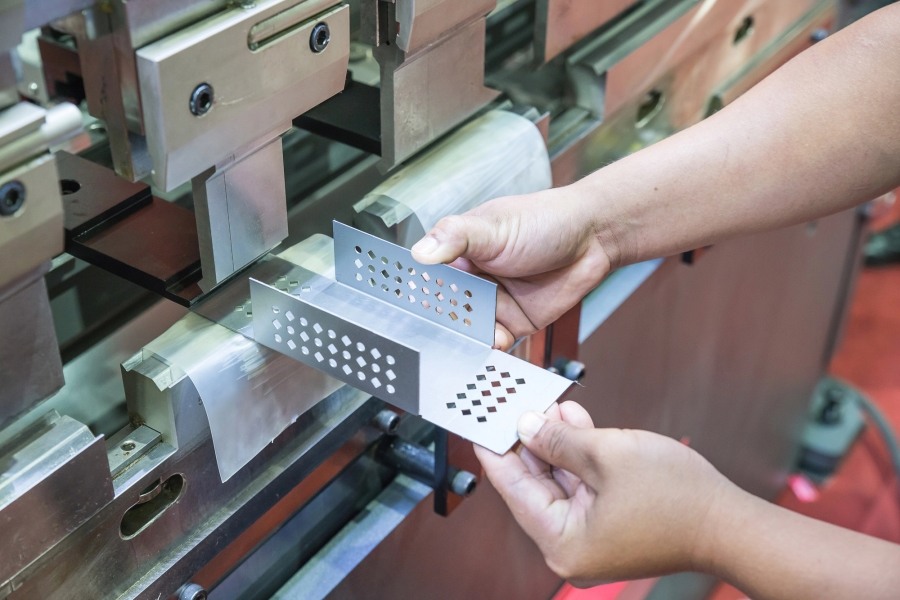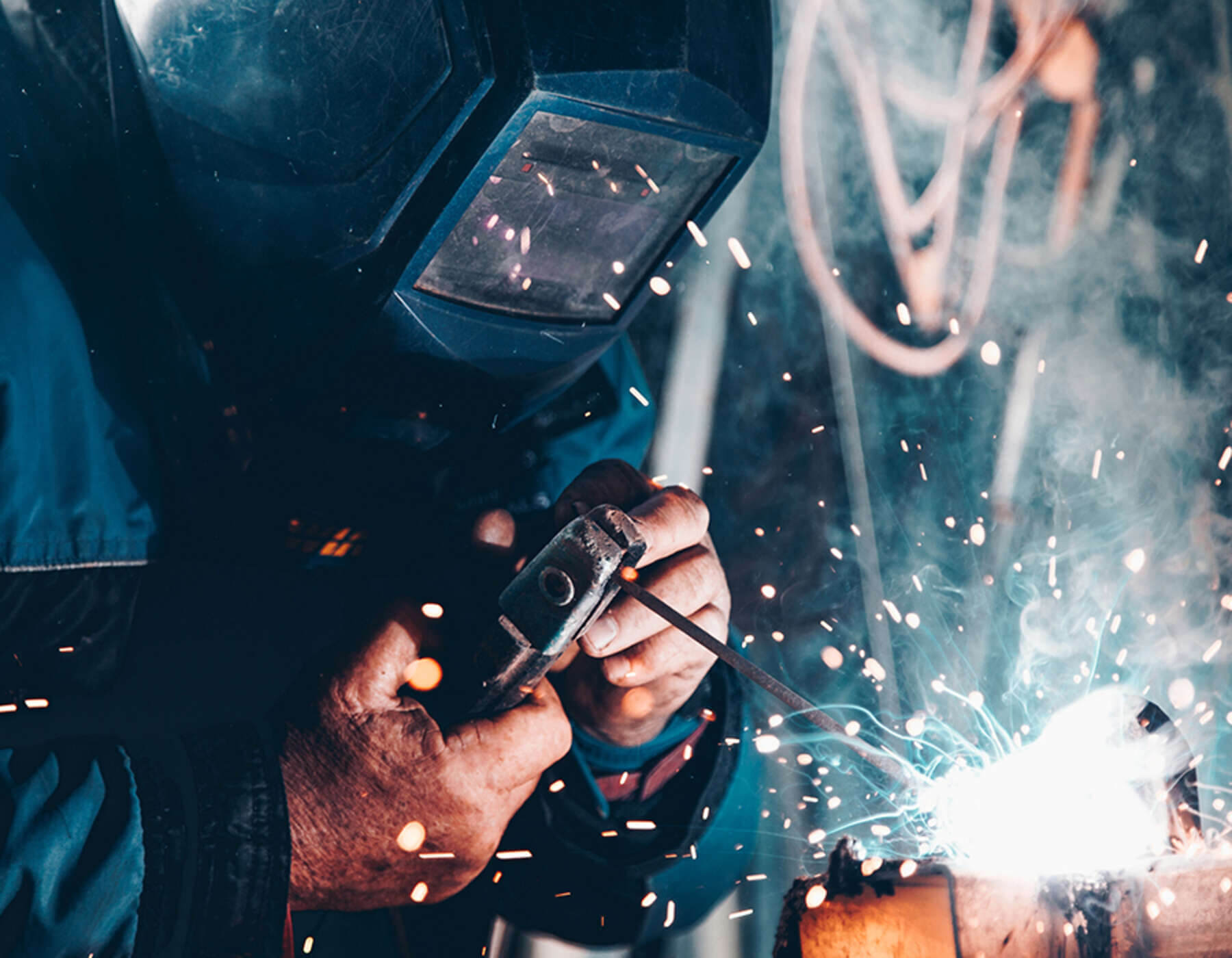
Our team will be the first to tell you that fabrication techniques and processes take precision, skill, and, most importantly, a steady hand!
Fabrication involves various processes and procedures and depending on the project you’re producing, the processes are chosen based on the specifications and requirements to achieve the desired outcome.
One such sheet metal process is metal shearing.
The technique of cutting larger pieces of sheet metal to specific, smaller sizes – removing (shearing) unwanted material from the sheet metal.
Of course, there’s much more to it than this, and metal shearing comes with numerous benefits, all of which we’ll explore further throughout this post.
If you have a fabrication project in mind, why not give our team a call today on 0191 816 2718.
What is metal shearing?
Metal shearing is one of the most widely used methods for cutting metals.
A precision-driven process that requires experienced sheet metal fabricators to slice through sheet metal with specifically designed cutting machinery.
We use metal shearing to remove excess material to create the final desired shape, with methods of cutting involving grinding, turning, drilling, laser cutting, water jet cutting, and even heat.
Each technique listed above has its own advantages and drawbacks; however, it’s important to note that this range of cutting techniques means that there is a cutting process suitable for all applications and metal types.
Metal shearing involves cutting sheet metal into straight lines with precision skill to prevent chipping and cracks from forming on the metal.
How to shear metal
The process of shearing metal involves the shearing machine holding the sheet metal in place, allowing you to create the perfect cut as you lower the blade (straight-edged blades) onto the metal, shearing it to the accurate specifications set.
It is vital to account for clearances when conducting metal shearing, as the cut from the separated metal will affect quality. This means you will require sufficient clearance to make sure the cuts on the sheet metal are completely separate.
However, be cautious, as too much clearance can damage the metal.
Our advice?
Always work with a professional fabrication team—a team with the skills, experience, equipment, and knowledge to deliver high-quality projects every time.
In addition, you will find two main types of machinery that can carry out shearing metal,
these include:
Bench shears – a small tooling system that is lightweight and easy to use. Bench shears are also one of the most common shearing tools in the fabrication process. Making straight cut lines that won’t chip the metal, bench shears create minimal waste, it is cost-effective, and the metal doesn’t require heating or melting before the cut can take place.
Power shear/guillotine – a more complex technique that should only be performed by fabrication experts. Power shearing is faster and often more effective than bench shearing and is suitable for large-scale projects. Cutting sheet metal to size, with power shearing, blades come together, allowing you to cut sheet metal into smaller pieces, providing you with quality, clean cuts that are easily and quickly repeatable.
Advantages of metal shearing
- Produces less waste as cuts are made to set specifications.
- Simple and quick process – for experienced fabricators with the right equipment.
- Provides clean, clear cuts (depending on the equipment and tools used, make sure to always check these out at your chosen fabricator).
- Ability to cut small lengths from large sheet metal within good timescales—great if you’re working to tight turnarounds and lead times.
- You can manage a large output in a short time frame. Again, this can depend on the fabricator you choose to work with, so make sure to do your research.
- Efficient fabrication process that is suitable for mass production runs.
- The chosen metal doesn’t have to be heated; there is less waste, and metal shearing can be used on a variety of metals, for example:
- Stainless steel
- Bronze
- Aluminium
- Copper, AND
- Iron
Note: Harder metals can’t be sheared as the process will cause deformation on the sheet metal in question. In such cases, sheet metal fabricators will offer alternative solutions so that the desired outcome can still be achieved.
Furthermore, when we look at how to shear a metal and due to metal shearing cutting metal in straight lines, it’s important to be aware that this process is not ideal for intricate designs or projects that require fine cuts. However, there will be an alternative solution. Discuss this with your fabrication team.
Sheet metal fabrication near me
Metal shearing is an intricate process that involves cutting sheet metal to set specifications. It requires skill, experience, and a team with the tools and capabilities to carry out the process to a high standard.
If you have any questions about metal shearing or any aspect of the fabrication process, make sure to get in touch.
We’re a full-service metal fabrication company working locally and UK-wide. Providing our customers with a range of sheet metal fabrication services to meet various needs in a range of industry settings.
Email us at info@morfabrication.com or call us at 0191 816 2718 to discuss your next metal project.
Read next blog: Metal Blanking
